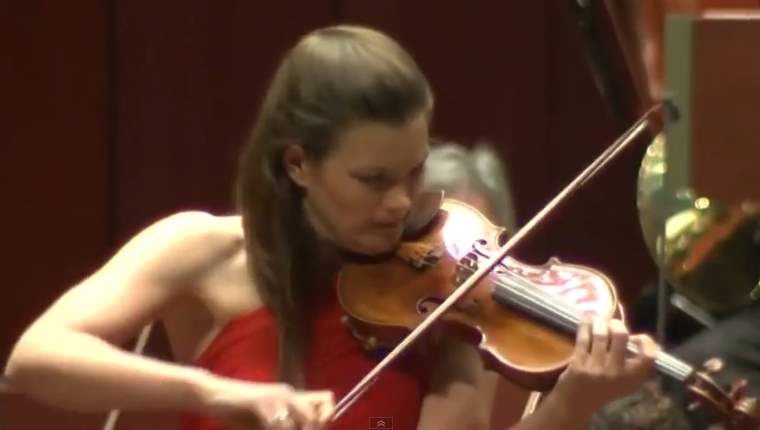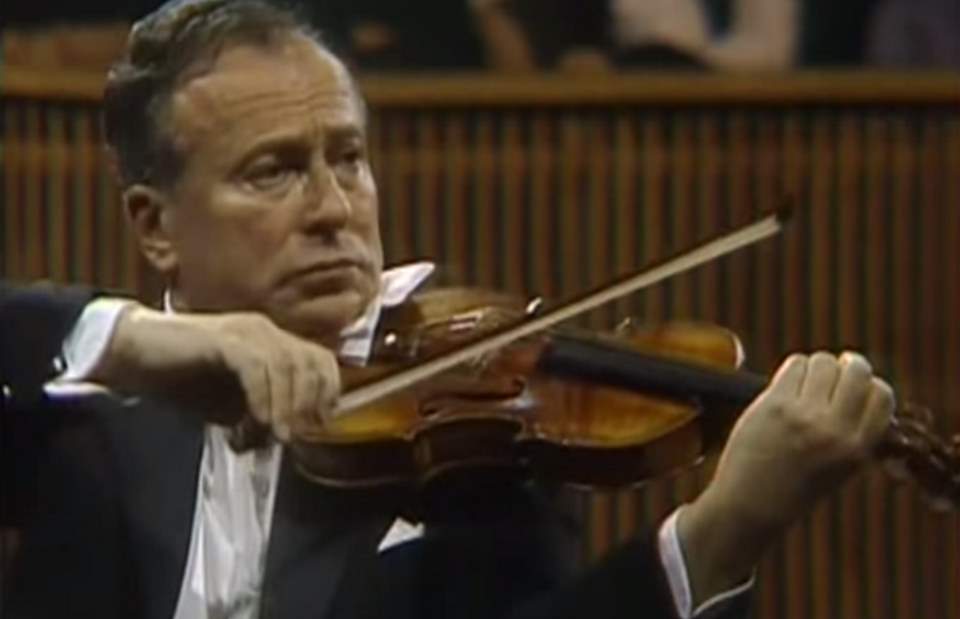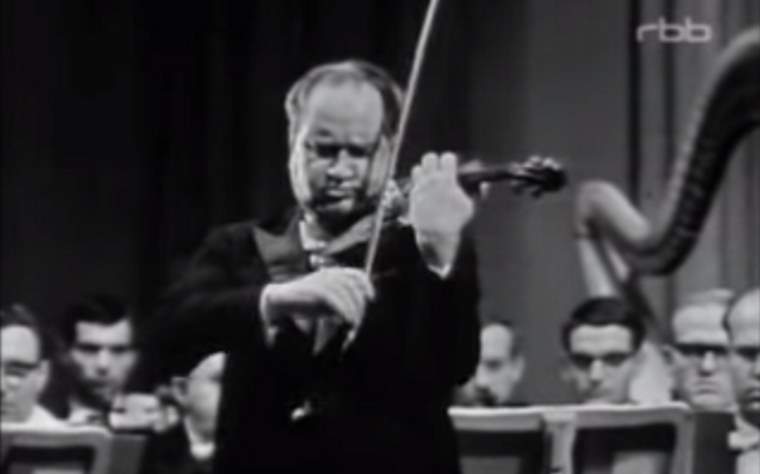Accompanied by the Philadelphia Orchestra, the Israeli-American violinist Itzhak Perlman performs Pyotr Ilyich Tchaikovski’s Violin Concerto in D major, Op. 35. Written in 1878, it is one of the best-known and most performed violin concertos and is considered one of the most technically difficult works for the violin. Conductor: Eugene Ormandy.
Tchaikovski’s Violin Concerto
The Tchaikovsky Violin Concerto in D major, Op. 35, stands as one of the most renowned violin concertos ever composed, remarkable for its melodic richness and technical demands. Composed in 1878, Tchaikovsky penned this concerto during a particularly tumultuous period in his life, marked by emotional turmoil and a disastrous short-lived marriage. Seeking solace, he retreated to Clarens, Switzerland, where he found inspiration in the serene landscape and composed this enduring piece of music.
The concerto initially faced harsh criticism. Esteemed contemporaries, including the initially intended soloist, Leopold Auer, deemed it unplayable due to its formidable technical challenges. Critics were unkind, with one famously describing the concerto as music that “stinks to the ear.” Despite such resistance, it wasn’t long before the concerto found its champions. The virtuosic violinist Adolf Brodsky took on the concerto, and after painstaking work, he delivered the premiere in Vienna in 1881, albeit to mixed reviews.
Over time, the Tchaikovsky Violin Concerto gained recognition for the very aspects it was criticized for – its passionate intensity and bravura passages. The concerto requires a profound level of technical proficiency from the soloist, encompassing a broad range of violin techniques, from lyrical passages and expressive melodies to rapid scales and arduous double-stops.
Today, it is celebrated for its emotional depth and virtuosic demands, a showpiece for violinists and a favorite among audiences for its memorable themes and dramatic contrasts. Its place in the repertoire is undisputed, a testament to Tchaikovsky’s ability to marry technical challenge with expressive beauty, and it serves as a bridge between the Romantic era’s lush harmonies and the unfolding drama that would characterize the music of the late 19th and early 20th centuries. The concerto remains a staple on concert stages worldwide, often regarded as a rite of passage for advancing violinists and a beloved work among seasoned professionals.
Movements
Tchaikovsky’s Violin Concerto is in three movements (there is no break or pause between the second and third movements):
- Allegro moderato
- Canzonetta: Andante
- Finale: Allegro vivacissimo
1. Allegro moderato
The first movement of Tchaikovsky’s Violin Concerto, marked Allegro moderato, unfolds as a sprawling tapestry of melody and virtuosity that immediately captivates the listener. It begins with a short orchestral introduction that sets the stage for the violin’s entry. This opening section is warm and rich, with the orchestra presenting themes that the solo violin will soon take up and expand upon.
When the solo violin enters, it does so with a series of graceful gestures that soon give way to one of the concerto’s most recognizable and lyrical themes. This theme showcases the violin’s singing quality, with Tchaikovsky exploiting the instrument’s expressive range. The solo part quickly escalates in complexity, presenting the performer with a gauntlet of technical challenges, including rapid scale passages, delicate shifts in dynamics, and a wide range of articulations.
As the movement progresses, the development section takes the listener through a series of variations and modulations, always rooted in the rich melodic material introduced at the beginning. The music is intensely emotional, with the violin and orchestra engaging in a dynamic conversation that moves through various moods and intensities.
Tchaikovsky’s use of folk-like melodies, perhaps inspired by Russian and other Slavic music, imbues the concerto with a sense of nationalistic flavor. This movement, like the entire concerto, is notable for the way it stretches the soloist’s abilities to express both the grandeur and the subtlest nuances of the music.
The cadenza, a section where the orchestra pauses and the soloist plays alone, is a particular highlight of the first movement. Here, the violinist is given the freedom to explore the thematic material in a highly personal and improvisatory manner, showcasing their technical skills and interpretative prowess.
The movement concludes with a reprise of the earlier themes, followed by a coda that accelerates to a fiery and exciting finish, leaving both the soloist and the audience on a high note of exhilaration. The balance between the solo violin and the orchestral accompaniment, the memorable themes, and the impressive technical displays all work together to create a movement that is both emotionally stirring and a triumphant opening to the concerto.
2. Canzonetta: Andante
The second movement of Tchaikovsky’s Violin Concerto, marked Canzonetta: Andante, serves as a tender and lyrical interlude between the vigorous first movement and the exhilarating finale. It opens with a soft and somber orchestral introduction, setting a mood of introspection and gentle melancholy.
As the violin enters, it sings a sweet and plaintive melody, filled with a deeply expressive, almost vocal quality. The Canzonetta is characterized by its simplicity and heartfelt emotion, a stark contrast to the bravura and complexity of the surrounding movements. Tchaikovsky’s ability to craft a melody that speaks directly to the heart is on full display here, with the violin line weaving through the orchestral texture in a delicate dance.
The movement is relatively short, but within its brief span, Tchaikovsky creates a rich world of sentiment. The middle section introduces a contrasting theme that provides a moment of brightness before returning to the reflective mood of the opening.
This movement was actually a replacement for the original second movement Tchaikovsky composed. Unhappy with his first attempt, he replaced it with this Canzonetta, giving the concerto a more balanced emotional trajectory. The Canzonetta ends softly, leading without pause into the vigorous final movement, creating an effective bridge that contrasts with the fireworks to come. The second movement’s restraint and beauty make it a cherished moment of repose in the concerto’s overall structure.
3. Finale: Allegro vivacissimo
The finale of Tchaikovsky’s Violin Concerto, marked Allegro vivacissimo, is a thrilling and lively conclusion to the work. After the introspective Canzonetta, the finale bursts forth with an irrepressible energy, showcasing the violin’s agility and the composer’s rich melodic invention.
This movement is in a rondo form, which traditionally is a recurring main theme alternating with contrasting sections. It opens with a fiery main theme full of rhythmic drive and excitement, demanding a crisp and precise execution from the soloist. The orchestra provides a pulsating accompaniment that propels the music forward with relentless momentum.
Tchaikovsky infuses this movement with a folk dance-like quality, incorporating elements reminiscent of Russian folk music. The vibrant rhythms and rustic melodies suggest a scene of festive jubilation, perhaps a nod to the country fairs and peasant dances of his Russian homeland.
The soloist’s part is replete with technical fireworks: rapid string crossings, flying staccato, and swift leaps across the fingerboard. The energy hardly wanes, pushing the soloist’s virtuosity to the forefront. The orchestration is colorful and full of character, with the woodwinds and brass providing moments of tonal contrast and contributing to the overall folk atmosphere.
As the movement drives toward its conclusion, Tchaikovsky does not relent. The music builds in speed and excitement, leading to a coda where the tempo increases even further. The soloist engages in a dazzling display of virtuosity before the orchestra joins for the final, triumphant chords.
This movement is a test of stamina and technique for the soloist, as well as a thrilling ride for the listener. The conclusion of the third movement brings the concerto to an exhilarating close, cementing its status as a work that both celebrates the violin’s capabilities and leaves audiences in awe of its spirited brilliance.
Sources
- Violin Concerto (Tchaikovsky) on Wikipedia
- Tchaikovsky Violin Concerto on favorite-classical-composers.com.



